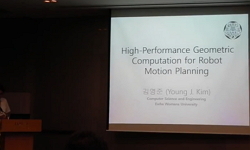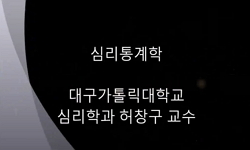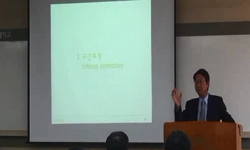Swabs are useful and common sampling tools in various research fields, such as medicine, ecology, biotechnology, forensic medicine, and pollutant monitoring systems. Collection reagents are one of the essential components in sampling. It is important ...
http://chineseinput.net/에서 pinyin(병음)방식으로 중국어를 변환할 수 있습니다.
변환된 중국어를 복사하여 사용하시면 됩니다.
- 中文 을 입력하시려면 zhongwen을 입력하시고 space를누르시면됩니다.
- 北京 을 입력하시려면 beijing을 입력하시고 space를 누르시면 됩니다.

면봉시료에서 세균의 보존을 위한 최적 보관 온도와 채취 시약의 비교 = Comparison of Optimal Storage Temperature and Collection Reagents for Living Bacterial Cells in Swab Samples
한글로보기https://www.riss.kr/link?id=A107989778
- 저자
- 발행기관
- 학술지명
- 권호사항
-
발행연도
2021
-
작성언어
-
- 주제어
-
KDC
400
-
등재정보
KCI등재
-
자료형태
학술저널
-
수록면
326-332(7쪽)
-
KCI 피인용횟수
0
- DOI식별코드
- 제공처
-
0
상세조회 -
0
다운로드
부가정보
다국어 초록 (Multilingual Abstract)
Swabs are useful and common sampling tools in various research fields, such as medicine, ecology, biotechnology, forensic medicine, and pollutant monitoring systems. Collection reagents are one of the essential components in sampling. It is important to develop a sample collection kit and designate an appropriate storage temperature because samples need to be stored for a long time. The purpose of this study was to identify the effects of three collection reagents and three storage temperatures on the recovery of living bacteria without media. We selected Escherichia coli and Staphylococcus aureus as representative environmental bacteria. Distilled water (DW), phosphate buffered saline (PBS), and Tris-EDTA (TE) buffer were used as collection reagents and stored at 22℃, 4℃, and -70℃ after sampling. The results of using each collection reagent and storage temperature on the bacteria were compared using relative light units (RLU) and the number of colony forming units (CFU). When using -70℃ storage temperature and the TE buffer, the number of living bacteria and the RLU values remained constant. It is therefore recommended that the sample be stored at -70℃ immediately after collection and a TE buffer solution be used as the collection reagent.
참고문헌 (Reference)
1 Low SXZ, "Viability of Escherichia coli ATCC 8739 in nutrient broth, luriabertani broth and brain heart infusion over 11 weeks" 5 : 576-581, 2013
2 Hamzah M. Al-Qadiri, "Using Fourier Transform Infrared (FT-IR) Absorbance Spectroscopy and Multivariate Analysis To Study the Effect of Chlorine-Induced Bacterial Injury in Water" American Chemical Society (ACS) 56 (56): 8992-8997, 2008
3 Sule P, "Use of the BacTiter-GloTM microbial cell viability assay to study bacterial attachment in biofilm formation" 99 : 19-21, 2008
4 Romeo L, "The α-cyclodextrin/moringin complex : a new promising antimicrobial agent against Staphylococcus aureus" 23 : 2097-, 2018
5 Aleksandra Anna Zasada, "The influence of a swab type on the results of point-of-care tests" Springer Science and Business Media LLC 10 (10): 2020
6 Timothy J. Verdon, "Swabs as DNA Collection Devices for Sampling Different Biological Materials from Different Substrates" Wiley 59 (59): 1080-1089, 2014
7 Panisello Yague D, "Survival of Staphylococcus aureus on sampling swabs stored at different temperatures" 131 : 1030-1038, 2021
8 Ross KS, "Repeated freezing and thawing of peripheral blood and DNA in suspension : effects on DNA yield and integrity" 27 : 569-570, 1990
9 Song YB, "Rapid microbiological assessment method by using ATP-bioluminescence in Ginseng powder" 25 : 127-129, 2001
10 Smith S, "Optimal storage conditions for highly dilute DNA samples : a role for trehalose as a preserving agent" 50 : 1101-1108, 2005
1 Low SXZ, "Viability of Escherichia coli ATCC 8739 in nutrient broth, luriabertani broth and brain heart infusion over 11 weeks" 5 : 576-581, 2013
2 Hamzah M. Al-Qadiri, "Using Fourier Transform Infrared (FT-IR) Absorbance Spectroscopy and Multivariate Analysis To Study the Effect of Chlorine-Induced Bacterial Injury in Water" American Chemical Society (ACS) 56 (56): 8992-8997, 2008
3 Sule P, "Use of the BacTiter-GloTM microbial cell viability assay to study bacterial attachment in biofilm formation" 99 : 19-21, 2008
4 Romeo L, "The α-cyclodextrin/moringin complex : a new promising antimicrobial agent against Staphylococcus aureus" 23 : 2097-, 2018
5 Aleksandra Anna Zasada, "The influence of a swab type on the results of point-of-care tests" Springer Science and Business Media LLC 10 (10): 2020
6 Timothy J. Verdon, "Swabs as DNA Collection Devices for Sampling Different Biological Materials from Different Substrates" Wiley 59 (59): 1080-1089, 2014
7 Panisello Yague D, "Survival of Staphylococcus aureus on sampling swabs stored at different temperatures" 131 : 1030-1038, 2021
8 Ross KS, "Repeated freezing and thawing of peripheral blood and DNA in suspension : effects on DNA yield and integrity" 27 : 569-570, 1990
9 Song YB, "Rapid microbiological assessment method by using ATP-bioluminescence in Ginseng powder" 25 : 127-129, 2001
10 Smith S, "Optimal storage conditions for highly dilute DNA samples : a role for trehalose as a preserving agent" 50 : 1101-1108, 2005
11 La Duc MT, "Isolation and characterization of bacteria capable of tolerating the extreme conditions of clean room environments" 73 : 2600-2611, 2007
12 You HS, "Influence of swabbing solution and swab type on DNA recovery from rigid environmental surfaces" 161 : 12-17, 2019
13 Jansson L, "Impact of swab material on microbial surface sampling" 176 : 106006-, 2020
14 Saliba R, "Impact of freeze/thaw cycles and single freezing at –80 degrees on the viability of aerobic bacteria from rectal swabs performed with the ESwab(TM)system" 96 : 114895-, 2020
15 Gosselt HR, "Global DNA(hydroxy)methylation is stable over time under several storage conditions and temperatures" 16 : 45-53, 2021
16 Gibbs SG, "Evaluation of the relationship between the adenosine triphosphate(ATP)bioluminescence assay and the presence of bacillus anthracis spores and vegetative cells" 11 : 5708-5719, 2014
17 Nopporn Song-im, "Evaluation of different sampling media for their potential use as a combined swab for the collection of both organic and inorganic explosive residues" Elsevier BV 222 (222): 102-110, 2012
18 Susanne E. Howlett, "Evaluation of DNAstable™ for DNA storage at ambient temperature" Elsevier BV 8 (8): 170-178, 2014
19 Aiken ZA, "Evaluation of ATP bioluminescence assays for potential use in a hospital setting" 32 : 507-509, 2011
20 Öz P, "Evaluating the performance of ATP bioluminescence method by comparison with classical cultural method" 5 : 77-82, 2019
21 Hedman J, "Enhanced forensic DNA recovery with appropriate swabs and optimized swabbing techniqe" 53 : 102491-, 2021
22 Delacour H, "Efficacy of a swab transport system in maintaining long-term viability of Staphylococcus aureus" 65 : 345-346, 2009
23 Turner DE, "Efficacy and limitations of an ATP-based monitoring system" 49 : 190-195, 2010
24 Lee HM, "Development of novel extraction reagents for analyzing dried blood spots from crime scenes" 317 : 110531-, 2020
25 Salsgiver E, "Comparing the bioburden measured by adenosine triphosphate(ATP)luminescence technology to contact plate-based microbiologic sampling to assess the cleanliness of the patient care environment" 39 : 622-624, 2018
26 Calvert R, "Caged ATP-an internal calibration method for ATP bioluminescence assays" 30 : 223-227, 2000
27 Kang HM, "Application of ATP Bioluminescence method for measurement of microbial contamination in raw meat, meat and dairy processing line" 15 : 252-255, 2000
28 Kanoatov M, "Analysis of DNA in phosphate buffered saline using kinetic capillary electrophoresis" 88 : 7421-7428, 2016
29 Smith PW, "A study of three methods for assessment of hospital environmental cleaning" 18 : 80-85, 2013
동일학술지(권/호) 다른 논문
-
- 대한임상검사과학회
- 박창은 ( Chang-eun Park )
- 2021
- KCI등재
-
- 대한임상검사과학회
- 이혁재 ( Hyeok Jae Lee )
- 2021
- KCI등재
-
Benzodiazepine 계열 약물 복용 환자의 수면다원검사에서 도출된 EEG유형 분석
- 대한임상검사과학회
- 장다준 ( Da Jun Jang )
- 2021
- KCI등재
-
대한민국에서 비만에 대한 고감도 C-반응성 단백과 요산의 상호 작용: 제7기 국민건강영양조사를 이용해서(KNHANES VII, 2016∼2018)
- 대한임상검사과학회
- 표상신 ( Sang Shin Pyo )
- 2021
- KCI등재
분석정보
인용정보 인용지수 설명보기
학술지 이력
| 연월일 | 이력구분 | 이력상세 | 등재구분 |
|---|---|---|---|
| 2026 | 평가예정 | 재인증평가 신청대상 (재인증) | |
| 2020-01-01 | 평가 | 등재학술지 유지 (재인증) |  |
| 2017-01-01 | 평가 | 등재학술지 선정 (계속평가) |  |
| 2016-01-01 | 평가 | 등재후보학술지 유지 (계속평가) |  |
| 2015-01-08 | 학술지명변경 | 한글명 : 대한임상검사학회지 -> 대한임상검사과학회지외국어명 : 미등록 -> Korean Journal of Clinical Laboratory Science |  |
| 2014-06-25 | 학회명변경 | 한글명 : 대한임상검사학회 -> 대한임상검사과학회영문명 : The Korean Society for Clinical Laboratory Science -> Korean Society for Clinical Laboratory Science |  |
| 2014-01-01 | 평가 | 등재후보학술지 선정 (신규평가) |  |
| 2004-12-17 | 학회명변경 | 영문명 : The Korean Society Of Biomedical Laboratory Science -> The Korean Society for Clinical Laboratory Science |
학술지 인용정보
| 기준연도 | WOS-KCI 통합IF(2년) | KCIF(2년) | KCIF(3년) |
|---|---|---|---|
| 2016 | 0.43 | 0.43 | 0.36 |
| KCIF(4년) | KCIF(5년) | 중심성지수(3년) | 즉시성지수 |
| 0.31 | 0.28 | 0.34 | 0.12 |




 ScienceON
ScienceON KISS
KISS






